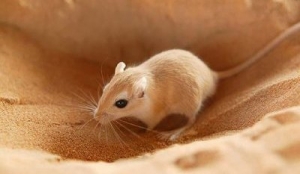Inside the Gerbil’s Genome
Project coordinator:
Gautier DOBIGNY
Institut de Recherche pour le Développement (IRD)
Centre de Biologie pour la Gestion des Populations (UMR IRD-INRA-Cirad-SupAgro Montpellier)
Campus International de Baillarguet
CS30016
34988 Montferriez-sur-Lez cedex
France
Gauthier.Dobigny@ird.fr
Project partner:
Philippe GAUTHIER at the CBGP - Centre de Biologie et de Gestion des Populations, UMR IRD-INRA-Cirad-SupAgro Montpellier - FRANCE
Website:
http://www1.montpellier.inra.fr/cbgp/?q=fr/users/dobigny-gauthier
Abstract:
Gerbillus nigeriae is a sand-dwelling rodent living of West African semi-arid regions. Since it essentially feeds on seeds, it represents a major pest species for Sahelian crops such as millet and sorghum: it is sometimes responsible for the complete destruction of seedlings thus further threating already vulnerable agro-ecosystems. To date, population and genetic dynamics results as well as tests of traditional trapping methods allowed ones to propose valuable and adapted strategies for gerbil control.
In addition to these agronomic aspects, G. nigeriae provides a fascinating model for the study of the origin and evolutionary consequences of chromosomal variations. Indeed, the species displays one of the most extensive floating Robertsonian (i.e. through centric fusions) polymorphism ever observed in mammals with a diploid number ranging from 2N=60-74. Meiotic data show the existence of multiple heterozygous individuals in the wild, thus possibly suggesting an increased tolerance to centric fusions in the heterozygous state. Moreover, cytogenomic analyses demonstrated the presence of pericentromeric repeats whose molecular structure and higher organization may favour fusion processes by themselves.
Unfortunately, the high number of chromosomes together with the particularly high amount of repeated elements (up to half of the genome size) make it very difficult to identify individual chromosomal pairs through traditional methods (i.e. banding and flow-sorted chromosome-based Zoo-FISH). This is the reason why we have developed a gerbil-specific BAC library. First, it will allow us to produce chromosome-specific BAC markers in order to be able to identify each chromosomal pair, thus greatly facilitating our understanding of the karyotypic polymorphism in the species. Second, such a BAC-library may serve as an interesting starting point for full genome sequencing projects in this fascinating model organism.
• Family : Muridae
• Sub-family : Gerbillinae
• Genera : Gerbillus
• Genome : diploïde , 2n=62 à 74
• Location : Niger (Sahelian Africa)
CNRGV involvement:
Responsible: Genséric BEYDON

